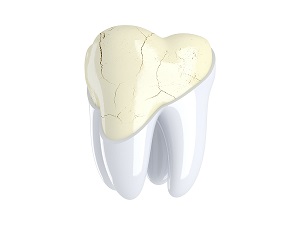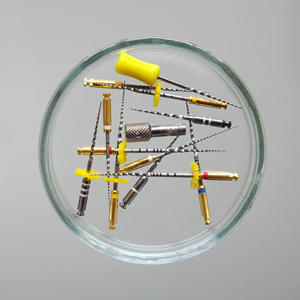
by Dr. Jacqueline S. Allen | Dec 28, 2016 | Blog, Endodontist
If you’ve received a referral to a Phoenix endodontist, you know that your general dentist wants your oral health issues to be assessed by a specialist. While the extra training and experience that an endodontist receives can reassure you that your teeth are receiving the best care possible, it also can be helpful to understand precisely how endodontists do their work. Here’s a brief look at how your Phoenix endodontist will work to save your smile and preserve your natural teeth whenever possible.
How Phoenix Endodontists Can Save Your Smile
 An endodontist can save teeth impacted by decay with several different procedures.You’ve probably heard about root canals and know that endodontists perform them to save natural teeth compromised by decay and/or infection. However, they also can perform a retreatment if a tooth treated by root canal shows signs of the infection returning; or they can treat a compromised tooth with an apicoectomy when infections persist in the bony area around the root of the tooth.
An endodontist can save teeth impacted by decay with several different procedures.You’ve probably heard about root canals and know that endodontists perform them to save natural teeth compromised by decay and/or infection. However, they also can perform a retreatment if a tooth treated by root canal shows signs of the infection returning; or they can treat a compromised tooth with an apicoectomy when infections persist in the bony area around the root of the tooth.
An endodontist can save teeth injured by trauma. Many patients are aware that root canal treatments are done by Phoenix endodontists when a tooth has become infected or suffers from decay; fewer are aware that endodontists are frequently recommended as the specialist to see when a natural tooth is cracked, chipped or even knocked out of one’s mouth! Damaged natural teeth often suffer disruption to their root canals, which opens up the possibility of the tooth pulp becoming infected. Endodontic treatment can ensure the tooth will be healthy enough to remain in the mouth.
An endodontist can save teeth with the use of cutting-edge technology. One of the reasons endodontists have become so successful in saving natural teeth is because improvements in materials and instruments used in endodontic treatments have revolutionized the field over the past 30 years. Today, endodontists are reviewing the use of lasers for more effective disinfection, computed tomography imaging (CBCT) to get a 3-D view of a patient’s tooth, and other technologies to make treatment of your natural teeth faster, safer, less painful and more effective than ever.
“Your Phoenix endodontist is an important ally in keeping your smile healthy and whole,” says Dr. Jacqueline S. Allen, who practices with the Phoenix Endodontic Group. “Our specialty has many ways to help you preserve your natural teeth for a lifetime!”

by Dr. Jacqueline S. Allen | Dec 7, 2016 | Blog, Cracked Teeth, Endodontics, Endodontist
 There are several different types of cracks that teeth can develop and they have a wide variety of symptoms. The most common symptom that you may have a tooth that is cracked is unpredictable pain with chewing especially with the release of the biting pressure. Some patients experience pain with hot or cold, while others may continue to only have occasional biting sensitivity. In many cases, the pain is very episodic and can refer to other areas of the mouth, which may make it difficult for the patient and the dentist, to determine which tooth is the source of the discomfort.
There are several different types of cracks that teeth can develop and they have a wide variety of symptoms. The most common symptom that you may have a tooth that is cracked is unpredictable pain with chewing especially with the release of the biting pressure. Some patients experience pain with hot or cold, while others may continue to only have occasional biting sensitivity. In many cases, the pain is very episodic and can refer to other areas of the mouth, which may make it difficult for the patient and the dentist, to determine which tooth is the source of the discomfort.
Because there are various types of cracked teeth and the severity of the crack determines which treatment is best for the patient.
- A cracked tooth implies that a crack in the hard, exterior portion of the tooth has extended internally. If the crack does not affect the pulp, then a crown will be needed to save the tooth. If the pulp is affected, then a root canal procedure and a crown will be necessary. If the crack extends past the pulp and into the root structure below the bone, then the tooth should, in most cases, be removed.
- A split tooth is often the result of a long-standing crack that was never treated and therefore creates distinct segments that can be separated. The tooth cannot be saved intact, but depending on the position of the crack, a portion of the tooth may be saved with a root canal procedure.
A vertical root fracture is one that starts in the root structure and extends toward the chewing surface. These teeth rarely show symptoms and therefore, can sometimes go unnoticed until the surrounding gum tissue and bone become infected. The majority of these teeth must be extracted due to the prolonged progression of disease by the time the issue is discovered.
A cracked tooth does not only affect the surface. Several layers of a tooth can be victims of the crack, depending on the size. Under the outer, hard, white layer of enamel, is a softer substance called dentin and inside of that, is the dental pulp, which contains the nerves and blood vessels and is what is removed during a root canal procedure. A cracked tooth is painful because when the outer hard tissues of the tooth are cracked, chewing on it can cause the pieces to move which can irritate the pulp. Eventually the repeated stress on the pulp will damage it irreparably. This will lead eventually to is death and infection to the tooth, and possibly the surrounding gum and bone.
Unfortunately, cracks in teeth do not heal; even when treated, they may continue to progress and separate, which may result in the loss of the tooth. Placing a crown on a cracked tooth is the best way to provide maximum protection, but is no guarantee that the treatment will be successful, long-term. However, once these teeth are treated properly and in a timely fashion, they can continue to function for a lifetime.
Cracking a tooth may not always be preventable, but there are some things that you can do to help make your teeth less susceptible to cracks.
- Avoid chewing on extremely hard objects, such as ice, popcorn kernels that are unpopped, hard candy or other extremely hard objects.
- Avoid clenching or grinding your teeth if you are aware.
- If you clench or grind your teeth at night when it is impossible to control, discuss a professional night guard or retainer with your dentist.
- Always wear a protective guard when engaging in contact sports.
The overall outcome for the tooth, and the type of treatment necessary to help save it, varies, depending on type, location and extent of the crack. If a patient is concerned that they may have a cracked tooth, it is imperative to see your endodontist (this is someone who specializes in saving cracked teeth) as soon as possible. The more time that passes without treatment, the greater the risk of the fracture growing in size and spreading into the root, which would necessitate an extraction of the tooth.

by Dr. Jacqueline S. Allen | Dec 5, 2016 | Blog, Endodontics, Endodontist, Phoenix Endodontic Group
 At Phoenix Endodontic Group, we believe that our staff is what makes our practice so special! As a part of our employee spotlight series, this month, we are highlighting the work of our C.E.O. and Operations Manager, Kevin Conroy!
At Phoenix Endodontic Group, we believe that our staff is what makes our practice so special! As a part of our employee spotlight series, this month, we are highlighting the work of our C.E.O. and Operations Manager, Kevin Conroy!
Q: Tell us a little about yourself—where are you from? Where did you get your degree?
A: I am originally from New York, but I have also lived in Virginia. I got my degree from James Madison University in Harrisonburg, Virginia.
Q: Have you always worked in the dental industry?
A: No, I used to be work for corporate finance at AT&T Capital and Wells Fargo financial leasing.
Q: How did you end up at Phoenix Endodontic Group?
A: My wife is Dr. Allen, and she wanted to grow the business, so I joined on. I serve as the C.E.O. and Operations Manager here at Phoenix Endodontic Group.
Q: What is your favorite part of working at Phoenix Endodontic Group?
A: No two days are ever the same here! I also love using state-of-the-art technology in order to deliver the very best services to our patients.
Q: What is a piece of advice you would offer to patients?
A: Don’t fear the endodontist! The process is not painful for most people.
Q: What is the most rewarding aspect of working at Phoenix Endodontic Group?
A: We treat our patients and referring offices the way we wish to be treated. We value integrity, honesty, and providing the finest endodontic care found anywhere.
Our team will restore your smile and heal you of pain. To learn more about our practice, or to schedule an appointment, call (602) 748-4190, or visit our website.

by Dr. Jacqueline S. Allen | Jul 14, 2016 | Blog, Endodontist, Root Canal
 If your tooth has become compromised due to disease or injury, you may be wondering what a Scottsdale endodontist can do to help you. Since even the best dental implant doesn’t function as well as your natural tooth can, it’s important to understand how Scottsdale endodontists can save your natural teeth. Here’s a brief overview of the work that these dental specialists are trained to do.
If your tooth has become compromised due to disease or injury, you may be wondering what a Scottsdale endodontist can do to help you. Since even the best dental implant doesn’t function as well as your natural tooth can, it’s important to understand how Scottsdale endodontists can save your natural teeth. Here’s a brief overview of the work that these dental specialists are trained to do.
How A Scottsdale Endodontist Can Save Your Teeth
- Endodontists’ training as dental specialists focuses on preserving the inside of your tooth. Endodontists receive two to three years of training beyond general dentistry, learning how to treat problems with the pulp inside your teeth and how to diagnose and treat problems in your root canals.
- Endodontists have access to special tools and materials to treat a damaged natural tooth. They are trained in the use of special cleaning files to remove infection from a root canal. They use the sealant gutta-percha to permanently seal off tooth roots that have experienced severe infection, and they prepare the tooth to be permanently protected by receiving a crown (and sometimes a post as well) to shore up the structure of the tooth. Because root canals often permanently resolve the damage to a natural tooth, in the long run, they can prove to be less costly and less invasive than opting for a dental implant.
- Endodontists are able to use a variety of procedures to save your natural tooth. Root canals are only one of the treatments that endodontists can utilize to preserve a compromised natural tooth. They can do a root canal retreatment if needed, as well as specialized procedures such as an apicoectomy.
- Endodontists are experts in relieving tooth pain. Scottsdale endodontists are able to quickly diagnose even baffling tooth pain, ensuring your natural tooth gets treated at the earliest possible moment.
“You don’t have to live with dental pain or have damaged natural teeth extracted,” says Dr. Allen, a Phoenix endodontist who practices with the Phoenix Endodontic Group. “Endodontic treatment can save your natural teeth and preserve your quality of life!”

by Dr. Jacqueline S. Allen | Jun 14, 2016 | Blog, Endodontics, Endodontist, Root Canal
 Despite a recent increase in awareness of the role of endodontists, root canal therapy is still feared by more than half (54%) of all Americans, according to a 2014 survey. This is truly unfortunate because the procedure has great potential to improve a dental patient’s oral health and well-being.
Despite a recent increase in awareness of the role of endodontists, root canal therapy is still feared by more than half (54%) of all Americans, according to a 2014 survey. This is truly unfortunate because the procedure has great potential to improve a dental patient’s oral health and well-being.
Here are just a few benefits that a patient can receive when he or she undergoes root canal therapy.
Benefits of Root Canal Therapy
- Reduces or eliminates pain from a toothache. Root canals can often successfully treat tooth pain symptoms, as well as symptoms related to infected tooth pulp, such as tenderness, foul smell or taste, and swelling in the gum and jaw tissue surrounding a tooth.
- Saves your natural tooth. A root canal removes and replaces the damaged and infected pulp from the inside of your tooth and allows it to function normally after a restoration is placed on the tooth.
- Improves the appearance of your tooth. A custom-made crown is often placed over the treated tooth. This can improve the appearance of a tooth that’s been cracked or infected.
- It’s a simple, relatively quick procedure. Root canal therapy typically only involves one or two appointments, including the installment of the final restoration.
- It allows you to speak, chew and eat normally. By removing the source of pain and protecting the natural tooth structure, a root canal allows you to keep using your tooth the way nature intended you to.
- Reduces the need for future dental work. By stabilizing the tooth and removing dangerous infections, root canals can prevent the need for tooth extractions, dental implants, and dentures. Many teeth that receive root canal therapy will last for the rest of a patient’s life.
“Get beyond the myths – a root canal is one of the best methods for preserving your natural teeth and enhancing your oral health,” says Dr. Jacqueline S. Allen, an endodontist who is a member of the Phoenix Endodontic Group.

by Dr. Jacqueline S. Allen | Jun 1, 2016 | Blog, Endodontics, Endodontist, Patients
 Because so many patients equate the practice of dentistry with pain, they may often wait to seek dental care. However, patients who neglect to attend their regular dentist appointments can be more susceptible to a possible progression of infection and/or dental disease, which can lead to more serious damage in the future. Therefore, it is important for clinicians to have pre-established plans to easily handle a dental emergency. Step-by-step methodology is an easy way to alleviate some of the stress of dental emergencies.
Because so many patients equate the practice of dentistry with pain, they may often wait to seek dental care. However, patients who neglect to attend their regular dentist appointments can be more susceptible to a possible progression of infection and/or dental disease, which can lead to more serious damage in the future. Therefore, it is important for clinicians to have pre-established plans to easily handle a dental emergency. Step-by-step methodology is an easy way to alleviate some of the stress of dental emergencies.
The first step in this process is to establish a differential diagnosis of tooth pain vs. non-tooth pain. The patient’s chief complaint during a dental emergency must be taken into account when performing diagnostic tests of the tooth that is suspected to be the cause of pain, especially since it may not be tooth-related. Any anesthesia that is applied to the suspected tooth should reduce or eliminate pain. If the pain is not alleviated, the tooth may not be the source of the issue. Also, if the clinician suspects any nerve involvement in the pain, an etiology can easily be deduced, especially if the patient has had recent dental treatment, restorations that are failing, tooth decay, and/or recent trauma; any of these events can lead to inflammatory pain. A clear diagnosis must be established before moving onto the next stage of treatment.
Dental treatment reduces the inflammatory process, which is the underlying cause of most acute dental pain emergencies. Treatment of the tooth can relieve pain by reducing tissue levels of inflammatory mediators, which can lead to symptoms such as apparently random throbbing and chewing pain.
The prescription of a specific drug, such as an antibiotic or an analgesic to reduce inflammation, is the final step in managing a dental emergency. It is important to note that antibiotics should only be prescribed to patients that have signs of odontogenic infections, including swelling, fever, malaise, or compromised airways.
Toothaches are one of the most common forms of pain that overwhelm emergency rooms and dental offices. With the appropriate methodologies for treating the anxious patient, a skilled clinician can easily accommodate an acute emergency dental patient and can provide an appropriate referral for non-tooth related pain conditions.

 An endodontist can save teeth impacted by decay with several different procedures.You’ve probably heard about root canals and know that endodontists perform them to save natural teeth compromised by decay and/or infection. However, they also can perform a retreatment if a tooth treated by root canal shows signs of the infection returning; or they can treat a compromised tooth with an apicoectomy when infections persist in the bony area around the root of the tooth.
An endodontist can save teeth impacted by decay with several different procedures.You’ve probably heard about root canals and know that endodontists perform them to save natural teeth compromised by decay and/or infection. However, they also can perform a retreatment if a tooth treated by root canal shows signs of the infection returning; or they can treat a compromised tooth with an apicoectomy when infections persist in the bony area around the root of the tooth.


 At Phoenix Endodontic Group, we believe that our staff is what makes our practice so special! As a part of our employee spotlight series, this month, we are highlighting the work of our C.E.O. and Operations Manager, Kevin Conroy!
At Phoenix Endodontic Group, we believe that our staff is what makes our practice so special! As a part of our employee spotlight series, this month, we are highlighting the work of our C.E.O. and Operations Manager, Kevin Conroy!
 If your tooth has become compromised due to disease or injury, you may be wondering what a Scottsdale endodontist can do to help you. Since even the best dental implant doesn’t function as well as your natural tooth can, it’s important to understand how Scottsdale endodontists can save your natural teeth. Here’s a brief overview of the work that these dental specialists are trained to do.
If your tooth has become compromised due to disease or injury, you may be wondering what a Scottsdale endodontist can do to help you. Since even the best dental implant doesn’t function as well as your natural tooth can, it’s important to understand how Scottsdale endodontists can save your natural teeth. Here’s a brief overview of the work that these dental specialists are trained to do.

 Because so many patients equate the practice of dentistry with pain, they may often wait to seek dental care. However, patients who neglect to attend their regular dentist appointments can be more susceptible to a possible progression of infection and/or dental disease, which can lead to more serious damage in the future. Therefore, it is important for clinicians to have pre-established plans to easily handle a dental emergency. Step-by-step methodology is an easy way to alleviate some of the stress of dental emergencies.
Because so many patients equate the practice of dentistry with pain, they may often wait to seek dental care. However, patients who neglect to attend their regular dentist appointments can be more susceptible to a possible progression of infection and/or dental disease, which can lead to more serious damage in the future. Therefore, it is important for clinicians to have pre-established plans to easily handle a dental emergency. Step-by-step methodology is an easy way to alleviate some of the stress of dental emergencies.